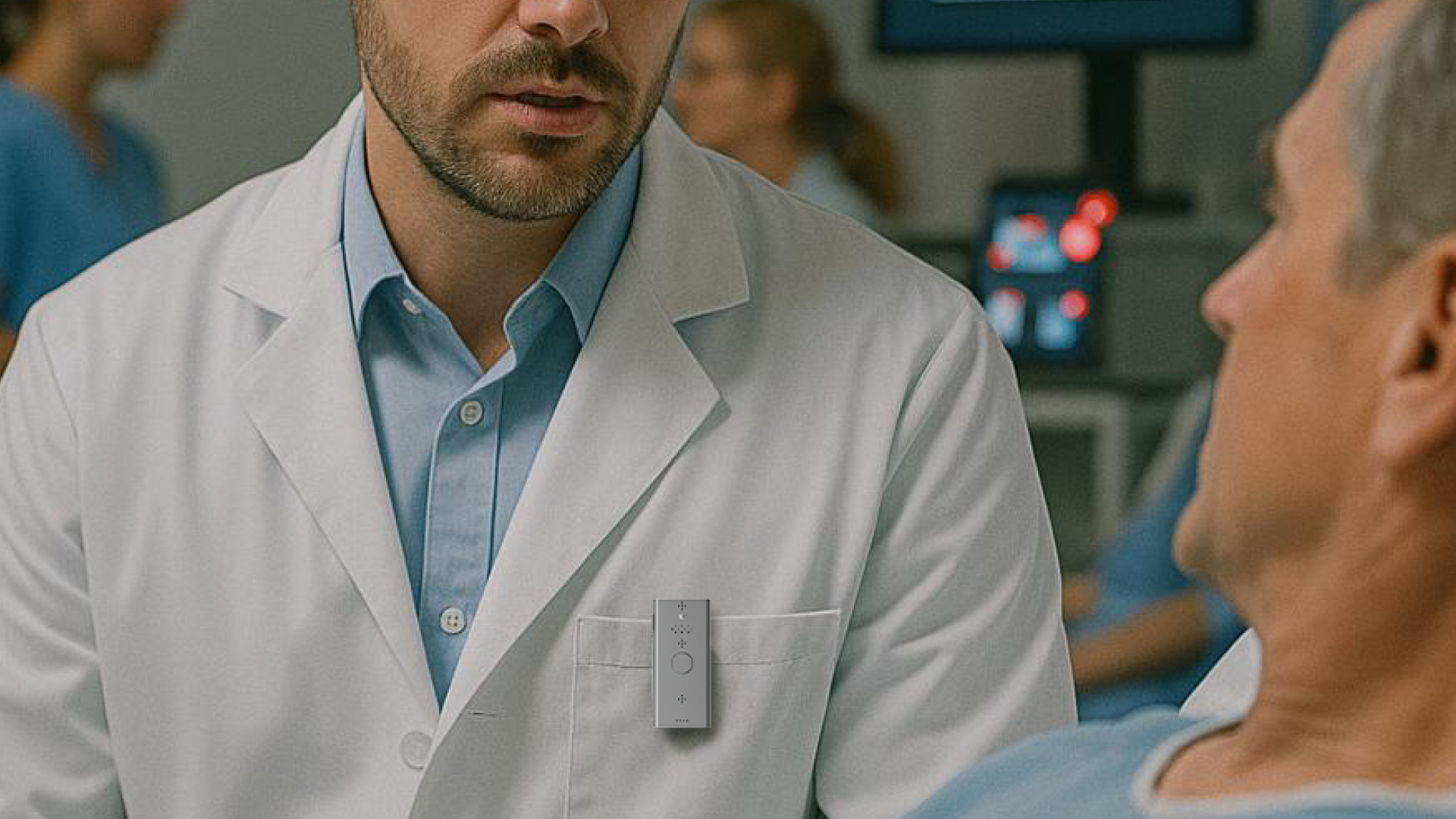Abstract
Clinical documentation is a cornerstone of modern healthcare, influencing both patient outcomes and operational efficiency. However, manual note-taking and transcription often consume significant time and introduce risks of error. This paper explores the implementation of wearable AI medical scribe hardware in hospital environments, evaluating its technical capabilities, integration pathways, and potential to improve accuracy, speed, and clinician satisfaction.
Introduction
In hospital settings, physicians and nurses face increasing demands to document patient encounters comprehensively while maintaining high-quality clinical interactions. Traditional documentation methods—whether handwritten notes or manual typing into electronic health record (EHR) systems—can disrupt patient engagement and reduce productivity.
Wearable AI medical scribe hardware offers a transformative alternative by enabling real-time, hands-free clinical documentation. Equipped with advanced microphones, directional pickup technology, and AI-driven transcription engines, these devices capture and process speech directly into structured medical notes.
Technical Overview
Hardware Architecture
Modern wearable AI medical scribe devices typically feature:
- Directional Microphone Arrays: Multi-mic arrays with beamforming capabilities to isolate the speaker’s voice from environmental noise.
- DSP (Digital Signal Processing) Chipsets: On-device noise suppression algorithms, including hybrid frequency-domain noise reduction, achieving signal-to-noise ratios (SNR) of 70–80 dB in professional models.
- Low-latency Wireless Transmission: Wi-Fi or Bluetooth Low Energy (BLE) protocols for direct data transfer to secure servers or AI transcription platforms.
Software Integration
These devices interface seamlessly with AI transcription software and hospital EHRs through APIs, supporting:
- Real-time speech-to-text with medical vocabulary optimization.
- Automatic speaker diarization to differentiate between clinicians and patients.
- Secure data encryption to meet HIPAA and GDPR compliance requirements.
Implementation in Hospital Settings
Clinical Use Cases
- Patient Consultations: Capturing histories, symptoms, and treatment plans without requiring clinicians to look away from patients.
- Emergency Department: Documenting rapid interactions in noisy, high-pressure environments.
- Ward Rounds: Synchronizing spoken updates directly into patient charts while moving between rooms.
Workflow Integration
Successful adoption requires:
- Hardware Customization — Adjusting microphone sensitivity and noise thresholds for specific wards.
- Training & Onboarding — Educating clinicians on activation commands and privacy features.
- EHR Synchronization — Configuring automatic upload and structured data mapping.
Benefits and Measured Outcomes
| Metric | Traditional Documentation | With Wearable AI Scribe Hardware |
| Average Documentation Time per Patient | 8–12 minutes | 2–4 minutes |
| Error Rate in Clinical Notes | 8–10% | 2–3% |
| Clinician Satisfaction Score | 6.5/10 | 8.9/10 |
Key improvements include time savings of up to 60%, reduced cognitive load, and improved patient engagement due to continuous eye contact.
Challenges and Considerations
- Privacy Concerns: Ensuring patient consent and preventing inadvertent recording of sensitive conversations.
- Speech Recognition Accuracy: Maintaining performance in multi-speaker or strong-accent environments.
- Cost-Benefit Analysis: Justifying hardware investment through ROI calculations and efficiency gains.
Future Directions
Next-generation wearable AI scribes are expected to incorporate:
- On-device AI processing to reduce reliance on cloud infrastructure.
- Context-aware summarization that produces SOAP (Subjective, Objective, Assessment, Plan) formatted notes automatically.
- Multilingual Support for increasingly diverse patient populations.
Conclusion
The implementation of wearable AI medical scribe hardware in hospitals represents a significant step toward streamlined, accurate, and patient-centered clinical documentation. By integrating cutting-edge audio capture technology with AI transcription systems, hospitals can enhance operational efficiency, reduce clinician burnout, and improve the overall quality of patient care.
As an OEM/ODM leader in this field, GMIC AI INC provides customizable, hospital-grade wearable AI scribe hardware designed to integrate seamlessly with existing medical transcription workflows. Leveraging over 15 years of manufacturing expertise, GMIC.AI enables healthcare providers to adopt tailored hardware solutions that maximize documentation accuracy, optimize clinician time, and support long-term digital transformation initiatives.

